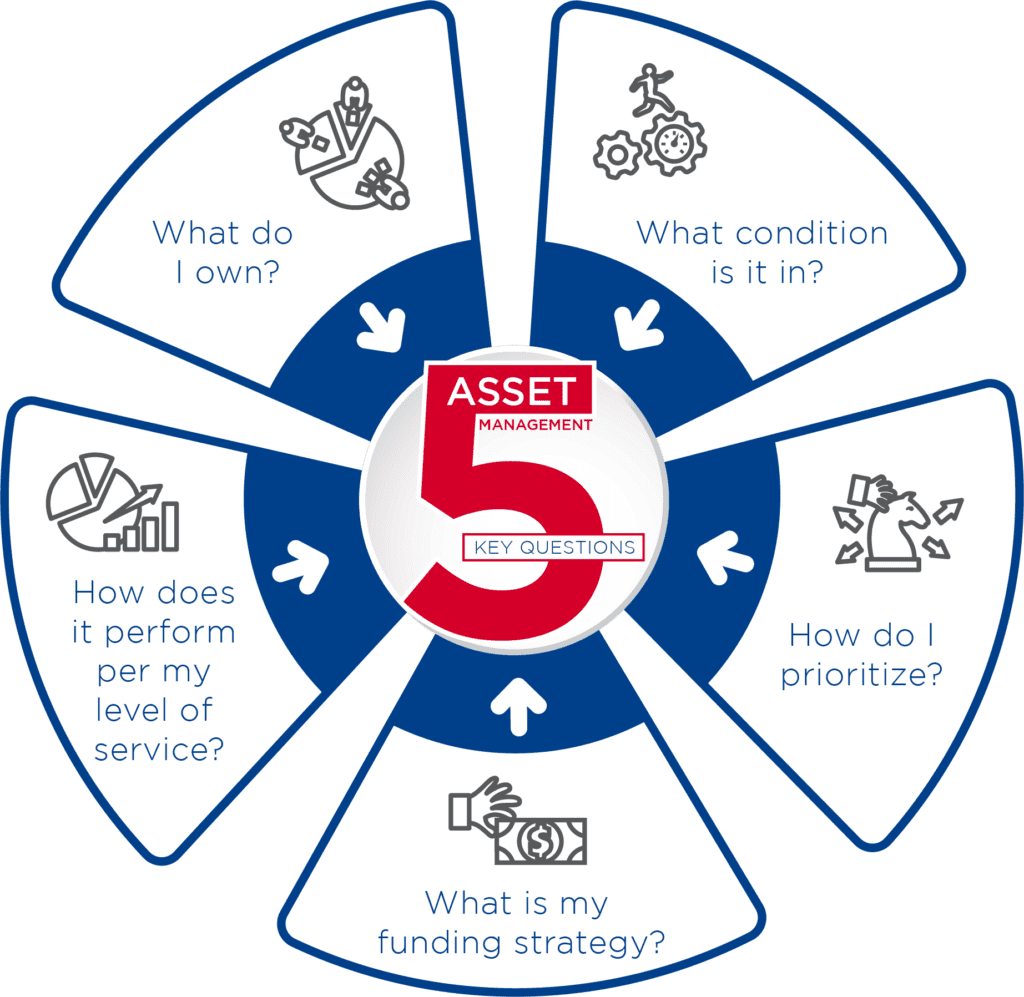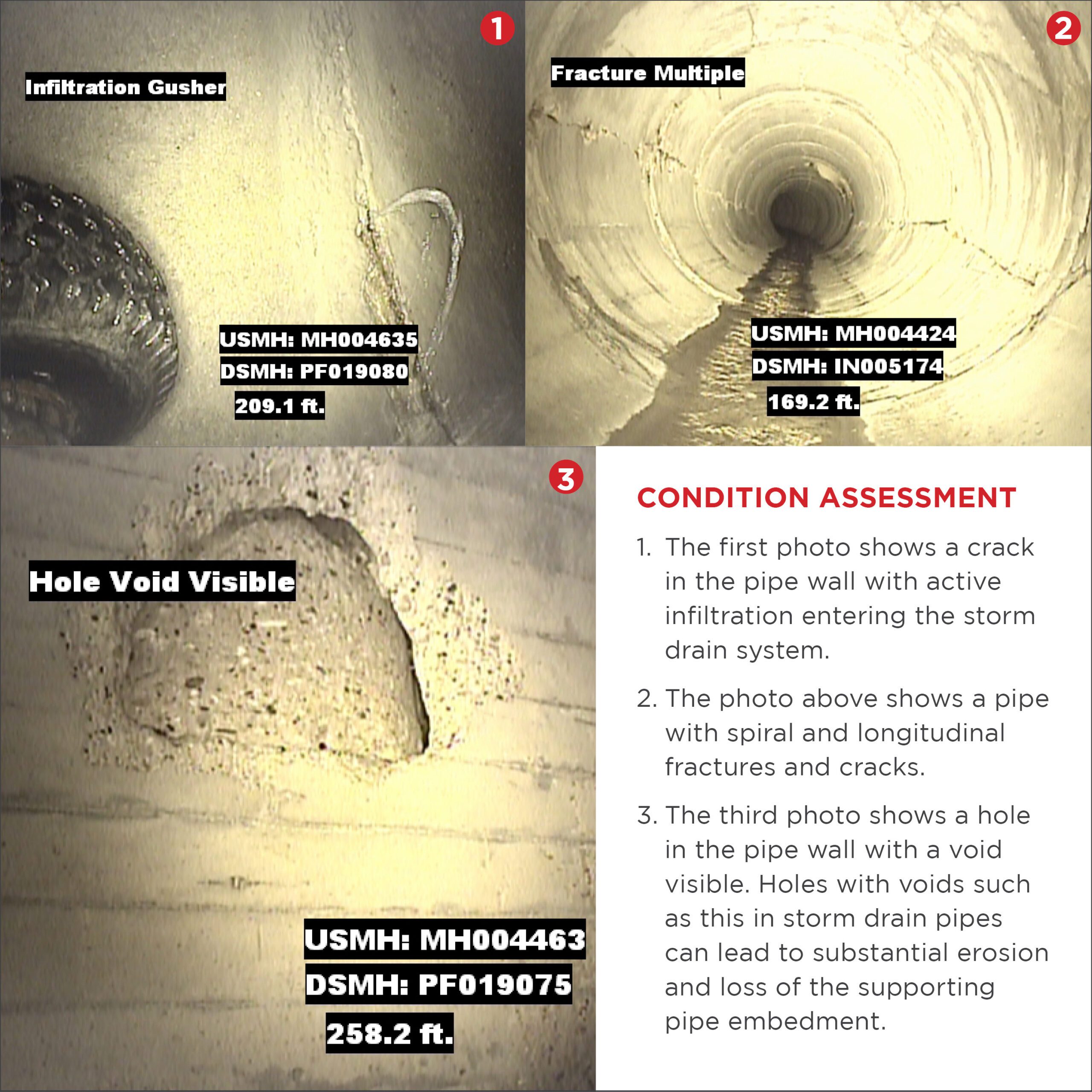How Asset Management Helps Maximize Existing Assets, Prioritize New Projects
America’s deteriorating infrastructure has been widely documented over the last few years.
The American Society of Civil Engineers (ASCE) estimates the U.S. needs to spend $4.5 trillion by 2025 to fix the nation’s roads, bridges, dams, water systems, levees, airports, schools and more.
The ASCE’s 2017 Infrastructure Report Card points out that nearly four in every 10 bridges are 50 years or older, and the current bridge rehabilitation bill is about $123 billion. The report card also notes that one out of every five miles of highway pavement is in poor condition, and that an estimated 240,000 water mains break every year, wasting trillions of gallons of water. Many of those pipes have been in use for 75 to 100 years.
And the report goes on—spelling out infrastructure needs in 16 categories.
Municipalities, of course, can fund only a limited number of these important projects each year to take care of the businesses and residents who call those places home. By the same token, having adequate roads, bridges, airports and schools is critically important for future economic development.
That brings asset management into play. And there are multiple talking points centered around determining which projects get the green light. Questions such as these arise:
-
If it isn’t broke, why worry about it now?
-
What information is going to help make strategic decisions?
-
Where will that information come from?
-
How will prioritized projects be funded?
-
How can existing assets be maintained and/or rehabilitated to maintain level of service, and help prevent asset failure and the associated costs?
Project prioritization is unique for every client, every city, every type of project and every type of asset. Most larger municipalities have an established prioritization process or are actively involved in ranking projects with a consultant. However, others struggle to shift from a reactive maintenance program to a proactive approach that inspects, maintains and rehabilitates assets on a schedule using a system-wide prioritization. Still other municipalities don’t have the personnel necessary to perform proactive maintenance or prioritize assets effectively.
Asset management evaluates the financial and engineering aspects of an asset alongside the physical attributes to achieve a sustainable, cost-effective solution. A risk-based approach with likelihood of failure criteria and consequence of failure criteria aids the systematic assimilation of pertinent asset information. A risk-based approach to asset management produces asset-level information that is easily shared and evaluated.
The asset management process ultimately increases service life and the level of service of assets, while decreasing operating and maintenance costs.
Stormwater Determinations
Public works professionals understand that these types of projects require constant monitoring and maintenance. The remainder of this article will consider two areas—storm drainage and pavement assessment—and some of the asset management thinking that goes into prioritizing those types of projects.
Risk-based criteria should be established to aid in the ranking of assets and projects. Likelihood of failure factors are related to the physical condition of the asset. This information is gathered through inspection and condition assessment. In lieu of current condition data, surrogate information can be developed using the physical characteristics of the asset (such as materials, size, age and work order history). Consequence of failure factors deal with the impact that asset failure would have. Factors related to stormwater prioritization criteria may include public safety, utility safety, critical facilities served, asset redundancy, water quality, hydrologic controls, environmental integrity, public acceptance and a cost-benefit analysis. Public education and acceptance play a large role in getting projects approved, and that’s where GIS is helpful in identifying locations of existing stormwater facilities, watersheds and floodplains that can be utilized to develop models and master plans to evaluate existing systems.
Condition assessment data is a critical component of making smart decisions within the asset management cycle.
Flood criteria come into play when flooding impacts insurable structures. Will a roadway become flooded during a storm event if a project isn’t constructed? Will traffic safety be impacted? Those determinations are worked into the decision-making. Another factor may be the tax value of the structures that are benefited. Will a project provide enough value to a specific area or will property buyouts be involved?
A consultant’s master plan ultimately summarizes alternatives, probable costs, conditions downstream and design requirements. A municipality can then rank, for example, a storm drain project vs. open channel repairs vs. erosion projects and have a master list to work from. It’s a big benefit when budgets and long-term plans are being created.
Another benefit to project prioritization is removing politics from the decision-making process. The ranking system, based on predetermined criteria, should be an unbiased system for evaluating projects so needs outweigh political pressure. The project prioritization could also identify opportunities with planned development where municipal strategies can be achieved for the political well-being of the entire city.
Pavement Management
Meanwhile, pavement assessment is also an educational process. The key is maintaining streets and roads that exist in a good condition—at a relatively low cost—rather than allowing pavement to deteriorate to the point at which extensive rehabilitation or reconstruction becomes necessary.
The typical components of a pavement management system are the following:
Inventory. The most difficult part of this system is getting started. That means inventory—a city must know how many miles of roadway it has to maintain so it isn’t acting in a reactionary way. What exists, and where is everything located?
Condition survey. What shape are the roads in? How much deterioration is present when cracks and potholes are examined? This process has become highly automated to the point where vehicles outfitted with cameras, sensors and lasers record measurements. The process considers pavement performance, material quality, traffic loading and environmental factors. It’s important these surveys are performed every two to three years.
Database. Establishing a database is critical so inventory and condition information can be analyzed, reports can be generated and maintenance strategies can be evaluated.
Analysis. Analysis makes pavement management recommendations based on defined priorities and methods such as rankings or a cost-benefit analysis.
Reporting tools. Software programs and GIS systems can provide information for reports in many formats including text, tables, graphics and maps that show streets in good or poor condition throughout the city.
Once the pavement management system methods and database are established, a three- or five-year program can be developed and updated. It becomes a more sustainable process. When the benefits of the program have been demonstrated, it’s possible to then refine the process to make more cost-effective decisions.
Other factors that come into play include traffic volume and areas where economic development has been identified and will intensify.
This evaluation process leads to the development of capital improvement plans and constructing projects or providing maintenance that has been prioritized from the initial assessment.
The organization of ranking criteria is paramount to prioritizing capital improvement projects and enjoying a smooth drive down the road.
Visit Halff’s Local Infrastructure service page to learn more and contact us today.






